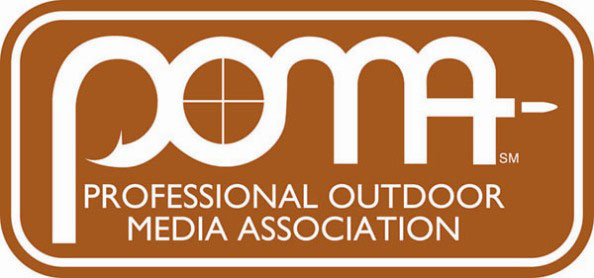Commission awards recognize conservation stalwarts
The Arizona Game and Fish Department is pleased to announce the recipients of the 17th annual Arizona Game and Fish Commission Awards. The awards honor individuals and groups that have contributed to Arizona’s wildlife resources and the mission of the department.
Award recipients are recognized for their achievements in 11 categories and will be presented their awards at the Arizona Game and Fish Commission’s Meet the Commission banquet on Jan. 19, 2008. This year’s awardees are:
Youth Environmentalist of the Year: Travis Bickford. Bickford has spent countless hours volunteering with many conservation groups, including the Arizona Elk Society and the National Wild Turkey Federation. He has also been a 4-H camp counselor and coached the White Mountain Scholastic Clay Target Program and Round Valley Junior Shooting Sports.
Media of the Year: The Outdoor Wire. This five-year-old publication is the brainchild of editor and publisher, Jim Shepherd. While attending a SHOT Show, Shepherd saw a niche to use the Internet to disseminate timely information about the outdoor industry. The Outdoor Wire has become one of the premier online outdoor news publications in the country.
License Dealer of the Year: Del Rey Western Outdoor. This family-owned license dealer outlet has been in service to the Arizona Game and Fish Department since 1998. Attention to detail and good customer service are the hallmarks of this service-oriented business.
Conservation Organization of the Year: Arizona Hunters Who Care. Started in 2002 by a group of 15 bowhunters concerned about trash buildup in several border hunt units, this organization, lead by the efforts of Lance Altherr, conducts clean-ups involving more than 300 volunteers from local sportsmen’s groups and organizations.
Outdoor Woman of the Year: Linda Dightmon. For the past eight years, Dightmon has been the Becoming an Outdoors Woman program coordinator for the Arizona Wildlife Federation (AWF), introducing other women to outdoor programs and instilling conservation into their lives. She also serves as the editor of the AWF magazine.
Conservationist of the Year: Lorri Gray. Gray is the regional director of the Bureau of Reclamation’s Lower Colorado Region and previously served as the program manager of the Lower Colorado River Multi-Species Program, a multi-agency program providing Endangered Species Act compliance for 41 entities in Arizona, California and Nevada and six federal agencies.
Environmentalist of the Year: Timothy Talbott. Talbott became chair of the Phoenix Chapter of the Rocky Mountain Elk Foundation in 2006, reorganizing the chapter and raising more than $40,000 in the process.
Volunteer of the Year: Rene Dube. Dube’s efforts to develop a solid volunteer base for wildlife restoration projects have earned him Volunteer of the Year honors with both the Arizona State Chapter of the National Wild Turkey Federation and the Coronado Natural Resource Conservation District. He is also a lead instructor in Arizona’s Scholastic Clay Target Program.
Wildlife Habitat Stewardship Award: Bob Fletcher. Co-owner and president of the T Link Ranch, Fletcher has worked with the Arizona Game and Fish Department to provide permanent access easement across his property, ensuring habitat improvement projects on the ranch and recreational access to thousands of acres of public land beyond the ranch.
Educator of the Year: Mike Trimble. A biology teacher at Corona del Sol High School in Tempe, Trimble developed a year-long study program, called the Arizona Trail Project, where students conducted a snapshot analysis of an outdoor site to study soil and water and the impact that wildlife and humans have on their area.
Awards of Excellence
- Clifton Ranger District. The district has worked cooperatively with the Arizona Game and Fish Department and other stakeholders to design and implement landscape-scale habitat improvement projects.
- Don Farmer. Farmer has worked tirelessly since 2004 to get the Arizona Legislature to commit to making the Arizona Heritage Fund bigger, better and voter protected.
- Old Pueblo Trout Unlimited. The chapter has worked tirelessly toward its mission to “conserve, protect and restore Arizona’s trout fisheries and their watersheds in addition to North America’s trout and salmon fisheries and their watersheds.”
- Jimmy Unmacht. A sophomore at Sandra Day O’Connor High School in Phoenix, Unmacht caught his first fish at age 7 and harvested his first dove at 8, beginning his extensive involvement in wildlife conservation and outdoor enjoyment.
- Jordan Azlin. Azlin developed 50 wildlife escape ramps that continue to benefit game and non-game species, as well as provide benefits to livestock operations in southeastern Arizona. The project helped Azlin achieve scouting’s highest award, the Eagle Scout.
- Brian Dolan. A past president of the Arizona Desert Bighorn Sheep Society, Dolan has played a key role over the years in the organization’s efforts to enhance habitat, develop watering holes, and improve sheep populations by transplanting sheep back into historic ranges.
- Andrea Nesbitt. Nesbitt has worked for wildlife for many years, starting as a volunteer at Liberty Wildlife, and for the past eight years serving as a volunteer at the Arizona Game and Fish Department’s Adobe Mountain Wildlife Center.
- Kenny Wilkins. Wilkins has been an Arizona Game and Fish Department registered volunteer since June 2006, donating time to help with raptor surveys. He is also a volunteer with Liberty Wildlife, where he assists in raptor rehabilitation and release.
- Thomas Slaughter. Slaughter has dedicated countless hours, personal resources and energy into passing on the hunting heritage to youth and other non-typical user groups. He is one of only two Arizona Game and Fish Department Level 3 shotgun coaches in Arizona.
“The commission is pleased to honor and give thanks to these individuals and organizations for their ongoing commitment to helping wildlife, habitat and outdoor recreation in Arizona,” says Game and Fish Commission Chairman Michael Golightly. “With partners like these, we will continue to lead the nation in efforts that will benefit our children and generations to come.”
Award presentations will be made during the Arizona Game and Fish Commission’s annual Meet the Commission Awards Banquet on Jan. 19, 2008, at the Crowne Plaza Hotel 2532 W. Peoria, Phoenix, AZ, 85029 (602) 943-2341. The event begins at 5:30 p.m.
Each year, the evening brings together hundreds of people who share a strong and personal interest in wildlife while providing an opportunity to meet the Game and Fish Commission.
Individual tickets are $50. Tables of 10 are $480 -a discount of $20. Organization sponsorships are available for $550 and include a table in the organization’s name, a program ad, and five banquet tickets for the organization. Another five tickets will be donated, in that organization’s name, to award recipients and guests.
For more information or to obtain a reservation form, visit www.azgfd.gov or contact Marty Fabritz at (623) 236-7281.







